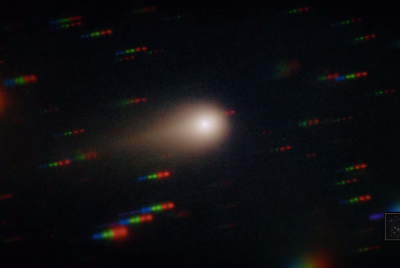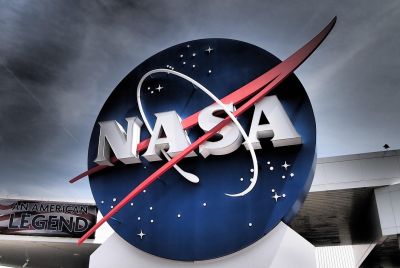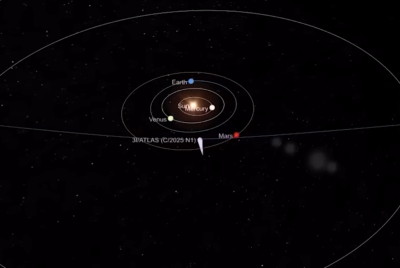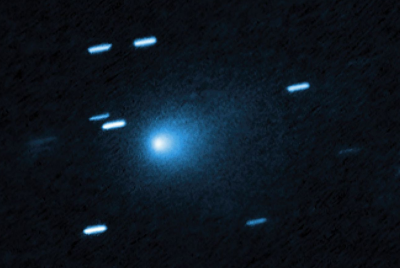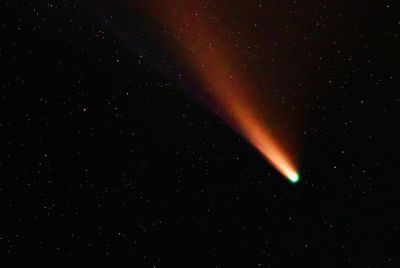3I/ATLAS Survived Solar Fire: The Object Didn't Flare, It Just Kept Going
3I/ATLAS defied solar destruction, leading some to wonder if it's built — not born — to withstand the sun's fury
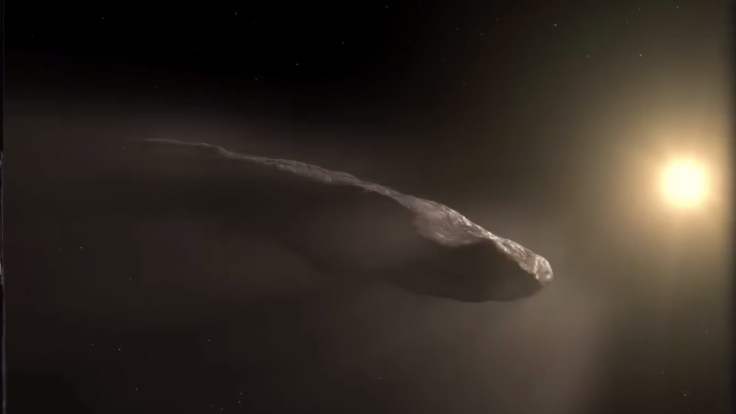
3I/ATLAS has just sailed through its closest point to the Sun with a surprising lack of massive flare-up and tail, just going in a steady motion.
For an object entering our solar system from another star, this indifference has sparked further speculations. Some observers and even experts believe the lack of expected comet behaviour could suggest 3I/ATLAS is not just an ordinary icy wanderer, but something more engineered, built to endure solar extremes.
3I/ATLAS Survives the Sun
When a comet dives past the Sun, the intense heat typically triggers wild activity: ices sublimate, gas jets erupt, and twin tails stretch out behind the body. But 3I/ATLAS defied that scenario.
At perihelion (or what we refer to as the point in its orbit when it comes closest to the sun) on 29 October 2025, when it approached to about 1.36 astronomical units (≈203 million km) from the Sun, all expected activity was not observed from the said comet.
Rather than brightening wildly or forming a dramatic tail, 3I/ATLAS maintained a stable brightness and trajectory. According to an X post who has been observing the object, 'NOTHING HAPPENED'.
🚨🚨🚨3I/ATLAS passed perihelion, and nothing happened.
— T.A.U (@TruAnsUnkn) October 29, 2025
Normally, this is the moment when comets put on their most dramatic show. As solar heat strikes their icy cores, ices sublimate, gas vents erupt, and twin tails — one of dust, one of charged ions — stretch for millions of… pic.twitter.com/C8n50zakEo
While some astronomers suggest the lack of activity may simply mean the object is composed of unusually resilient materials, the anomaly has caught the attention of those who believe otherwise.
Astronomer Avi Loeb, known for proposing that the first interstellar object Oumuamua might have been an alien probe, has called 3I/ATLAS' behaviour a 'pedagogical exercise' in exploring that possibility. Loeb suggested that this object could reveal its artificial nature by performing an Obert manoeuvre, an energy-boosting technique used by spacecraft near gravitational wells.
Loeb suggested that the object hiding behind the sun is the 'optimal' point for the reverse Solar Obert manoeuver.
However, during the time it passed perihelion, 3I/ATLAS was hidden behind the Sun from our viewpoint, which means we lack direct observational confirmation of any such thrust event.
Why 3I/ATLAS Surviving the Sun Matters
Comets are among the most volatile objects in the solar system, which makes their behaviour well-studied and usually predictable as they approach the sun. But there's an odd mystery to 3I/ATLAS.
Not only did it reportedly survive a direct solar coronal mass ejection without tail disruption, but its orbital plane also lies within 5° of the solar system's plenary plane. For a random interstellar object coming from outside our system, this alignment is extremely unlikely, only a 0.2% chance if by coincidence. On top of this, it maintained a stable light curve when other comets typically flicker or fragment. Meaning, it's composed of materials that don't react strongly to sunlight.
🚨3I/ATLAS Just Shrugged Off A Solar CME.
— Skywatch Signal (@UAPWatchers) September 29, 2025
A normal comet would’ve snapped, the tails ripped, core sputtering, the works. Instead this thing just kept its line, solid, steady, no drama.
If a so called "icy rock" can eat a solar blast and keep moving like nothing happened, then… pic.twitter.com/1c1nH9KABs
Because the object is currently behind the Sun's glare from our vantage point, direct observations are limited. It is expected to re-emerge in early December and will pass near Venus on around 3 November, and later approach Jupiter's orbit.
Astronomers will use those opportunities to measure changes in brightness, composition, and tail formation. NASA expects new images in November to explain how much it has transformed since passing close to the sun.
If activity remains minimal and its trajectory continues to behave anomalously, the conversation about artificial origin may escalate. However, if it suddenly flares as part of post-perihelion outgassing, the natural comet hypothesis will regain strength.
© Copyright IBTimes 2025. All rights reserved.






